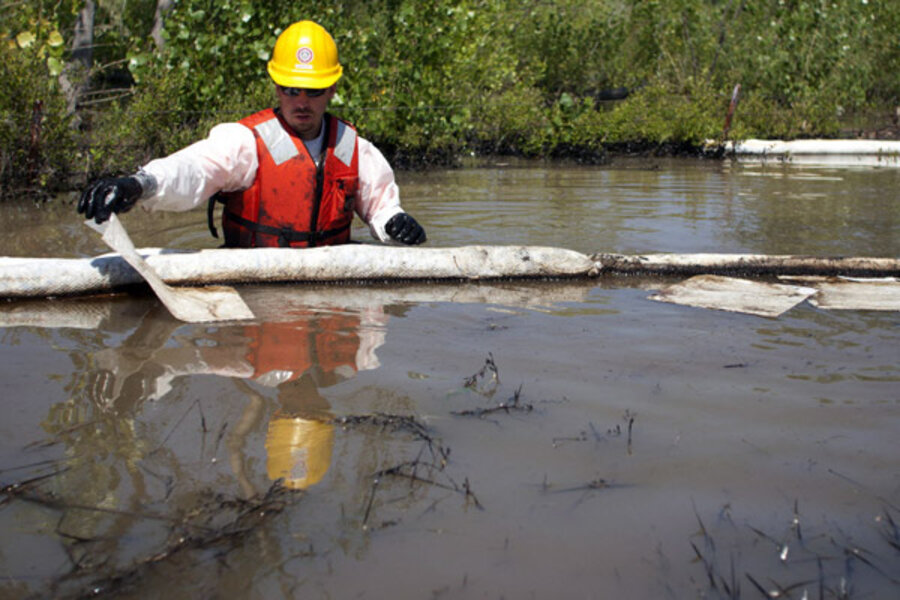Yellowstone River oil spill: US to test air in nearby homes
Loading...
| BILLINGS, Montana
The Environmental Protection Agency said Thursday it will collect indoor air samples from homes downstream of a Yellowstone River oil spill after residents raised concerns about health risks from the tens of thousands of gallons of crude that poured into the watercourse.
About 150 people showed up at an EPA meeting Wednesday night with questions about health risks, the duration of the cleanup, and whether the oil will permanently damage their livestock or property.
George Nilson, 69, said the fumes from oil that washed through his neighbor's property had been overwhelming.
"I've been in it for five days now, and the only way I can breathe is to have all the windows open," he said.
Health officials say symptoms residents have reported, such as nausea, dizziness and shortness of breath, are likely to ease as the chemicals in the oil evaporate or break down.
Steve Merritt of the EPA said Thursday that contractors for the agency and for Exxon Mobil Corp. will collect the air samples. The Texas-based company operated the pipeline that spilled an estimated 1,000 barrels of oilinto the river.
Laboratory results from the air testing are expected to take about a week. Merritt says Exxon Mobil's contractors will collect duplicate samples so their results can be verified by government scientists.
The cause of Friday night's pipeline rupture beneath the riverbed in Montana remains under investigation, but the prevailing theory among officials and the company is that the raging Yellowstone caused erosion and exposed the line to damaging rocks or debris.
There is still no definitive word on how far downriver the spill could spread.
Oil has fouled miles (kilometers) of the waterway that flows from the famed Yellowstone National Park, upriver from the spill, and across farmlands and prized fishing grounds, to North Dakota. There have been confirmed reports of oil as far as 80 miles (130 kilometers) downstream, although most appears to be concentrated in the first 25 miles (40 kilometers).
Officials in Laurel, near the site of the spill, raised questions last year about erosion along the riverbank threatening the Exxon Mobil line.
Company representatives initially said the spill lasted "at most" 30 minutes, and then later said workers began shutting down the line within six minutes of the break.
U.S. Department of Transportation records indicate the pipeline was not fully shut down for 56 minutes after the break.
Pipelines carrying oil and liquid fuels are often buried beneath rivers because the industry considers that safer than suspending them above waterways, where they could be vulnerable to lightning, tornados or other external threats.





